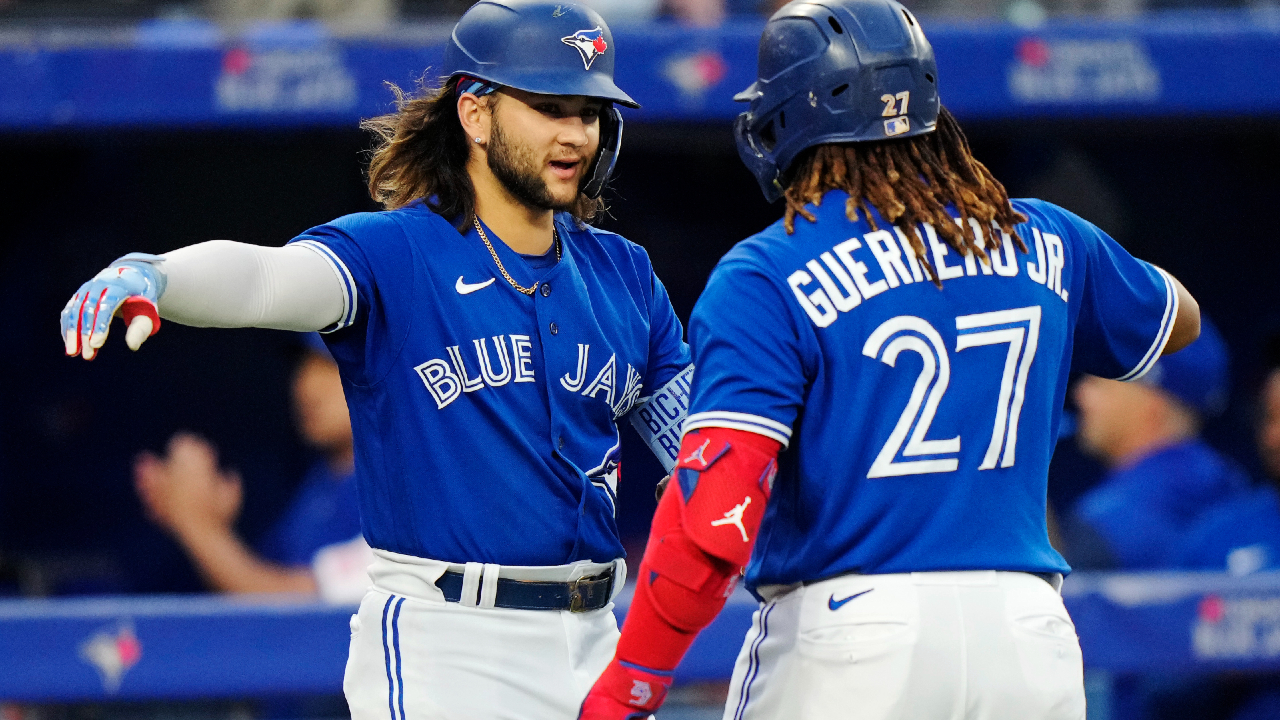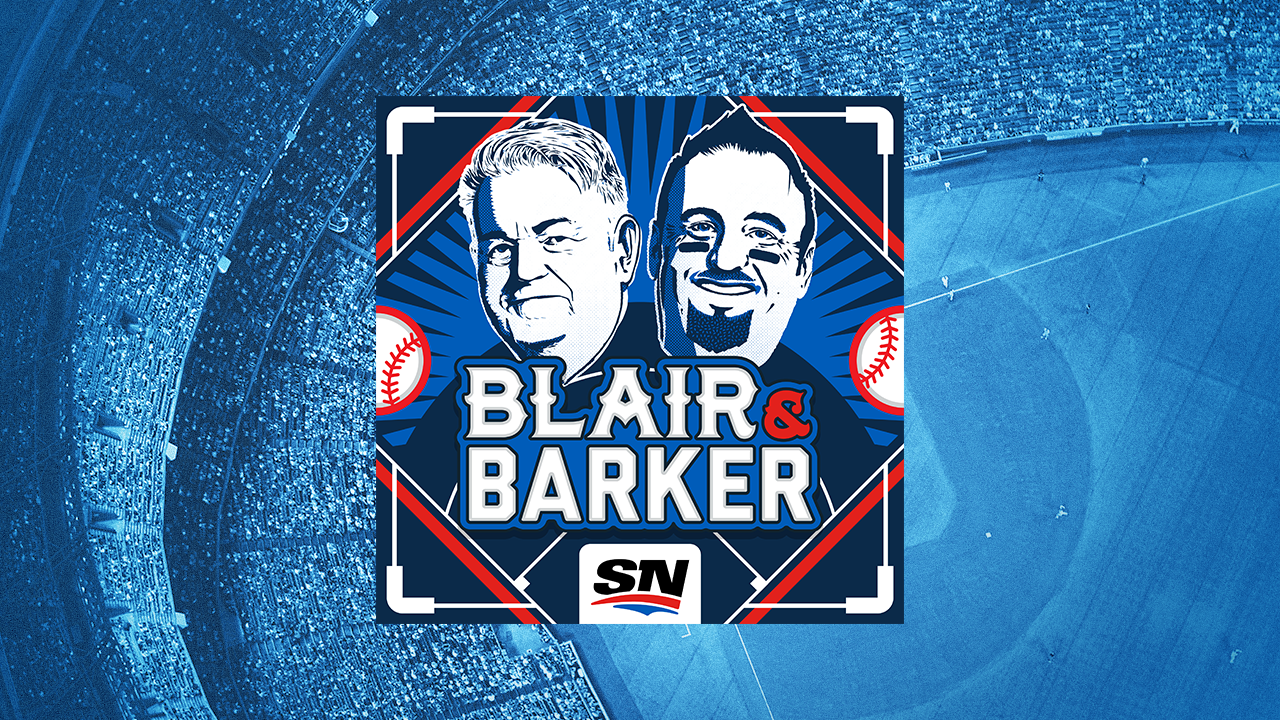
DUNEDIN, Fla. – Baseball is long past the traditional mould of lining up a speed guy one, a contact dude two, an all-around hitter three and a masher four, while old heresies like high OBP base-cloggers at leadoff and MVP candidates hitting second are now commonplace.
Still, no friendly argument in the sport is as timeless and enduring as that over how to put together the best batting order.
Never mind that study after study appears to show that it makes relatively minimal impact on a club’s run production.
Passionate debates about lineup optimization continue to take place among fans, players, coaches and executives everywhere, the Toronto Blue Jays‘ spring training camp no exception.
The off-season acquisitions of sluggers Brandon Belt and Daulton Varsho along with speedy chaos-maker Kevin Kiermaier, all left-handed hitters, have made the topic an especially important one for manager John Schneider.
He and bench coach Don Mattingly have already spent plenty of time running through various scenarios and they’ll spend much of the exhibition schedule experimenting with different combinations in search of an ideal mix.
And while it may seem as simple as loading up the top of the lineup with the best hitters to ensure they bat most often, or alternating left-handed and right-handed batters, or getting the analytics department to run some simulations, the considerations run far deeper than that.
“The way the game comes to you, the way you’re pitched matters based on what part of the lineup you’re in,” said veteran infielder Whit Merrifield. “Certain guys feel comfortable in certain spots and to bounce around based on X, Y, and Z analytically is not something everybody can do. It’s important to know how players adapt to certain situations, what they’re comfortable with. That plays a big part in success.”
Very much so and player comfort is part of the equation for Schneider, who will also be seeking to avoid “similar approaches to hitters back-to-back, or back-to-back-to-back if you’re looking at a reliever coming in to face three righties in a row.”
“You’re trying to balance it out to where when guys that can run get on, they can run depending on who’s in front of them. It’s more like that,” he continued. “You don’t want to pigeonhole anyone into saying you’re good or bad at this, but if guys are going to get on base in front of guys that can cover a lot of the zone, we want to do that. Guys that put the ball in play with runners on, it’s usually a good thing. We have that combination at the top, especially. Hopefully this year it’s a little bit deeper as you go down as well.”
George Springer, Bo Bichette and Vladimir Guerrero Jr. will again key the top part of the Blue Jays lineup, with where exactly to work Belt in among the pivotal questions.
Given his .840 career OPS against right-handed pitchers, the 34-year-old DH makes sense in the cleanup spot, although a case can be made for, say, batting him third with Guerrero at two and Bichette at four versus certain righties. The decision isn’t insignificant, as in 2020 Bill James made an interesting statistical case for the fourth spot being more valuable than the third spot.
Breaking up the righties with Belt would certainly complicate life for opposing managers when it comes to late-game bullpen machinations, an important consideration. So too is that an extended run of right-handed hitters might allow opposing pitchers to lock into a pitching lane, a concern the Blue Jays identified in their predominantly righty lineup last year.
“What they did this off-season in adding some left-handed hitters to the lineup, that’s helpful for sure,” said Belt. “When you only have one side, obviously the pitchers get in a groove and they can run with that for a while. Switching back and forth on them a little bit, it’s tougher for them get into a groove and that’s where I can help out and the other lefties that are coming in, we can help out.”
Where Varsho slots in with Kiermaier slated for the ninth spot in the lineup will be a similarly important call. The 26-year-old has a lot of pull power – and the Blue Jays feel his pop plays to the opposite field, too – but also lots of swing and miss, somewhat like a left-handed Matt Chapman.
Given that, splitting the two of them probably makes some sense, with catchers Alejandro Kirk and Danny Jansen, depending which is in the lineup, options to put between them.
Like Merrifield, Varsho believes batter comfort is key after hitting first, second fifth, sixth, seventh and eighth last year with the Arizona Diamondbacks.
“When you stick that player in that same spot, you know, they get comfortable and they get consistent,” he said. “That’s just the way I think about it.”
No matter how Schneider spreads the lefties out, how he utilizes Merrifield and Kiermaier, who both should be able to leverage the new pitch-clock and expanded bases once aboard, is essential.
Merrifield, who has led the American League in stolen bases three times, only attempted to swipe three bags in 44 games after his acquisition from the Kansas City Royals last year, not wanting to make outs in the nine-hole ahead of Springer, Bichette and Guerrero.
This year, he expects to be more active, and not only in pursuit of an extra 90 feet.
“I feel like when I’m on the bases, pitchers attack hitters differently,” he said. “They’re a little more concerned with me stealing, so they might be giving a hitter more fastballs, adjusting their times to the plate, which can take away from some of the velocity or break guys might have on the pitch, stuff like that. I feel like I can generate an advantage for the hitter.”
Between him and Kiermaier, that speed dynamic should help the Blue Jays on occasion manufacture runs, an element they’ve lacked over the past two largely all-or-nothing seasons.
But again, finding the right mix in how varying skillsets play off one another is critical.
“Having the right guy either behind you or in front of you allows you to be who you are. Guys can bounce off of each other and go from there,” said Springer. “I don’t really believe certain guys should hit certain places. I mean, conventional wisdom would probably say I’m not supposed to hit first, but I do. Conventional wisdom would probably say Kiermaier is not supposed to hit ninth, but he has and he will.
“And I don’t think where you hit in the batting order should be a slight to anybody. As a kid, if you’re hitting ninth it’s like, oh, man, I stink. If you’re hitting ninth in the big-leagues, you’re in the big-leagues and the nine-hole hitter is just as important as the three, four, five guys.”
The Blue Jays very much want that to be the case. A spring of experimenting in pursuit of an ideal configuration awaits.








